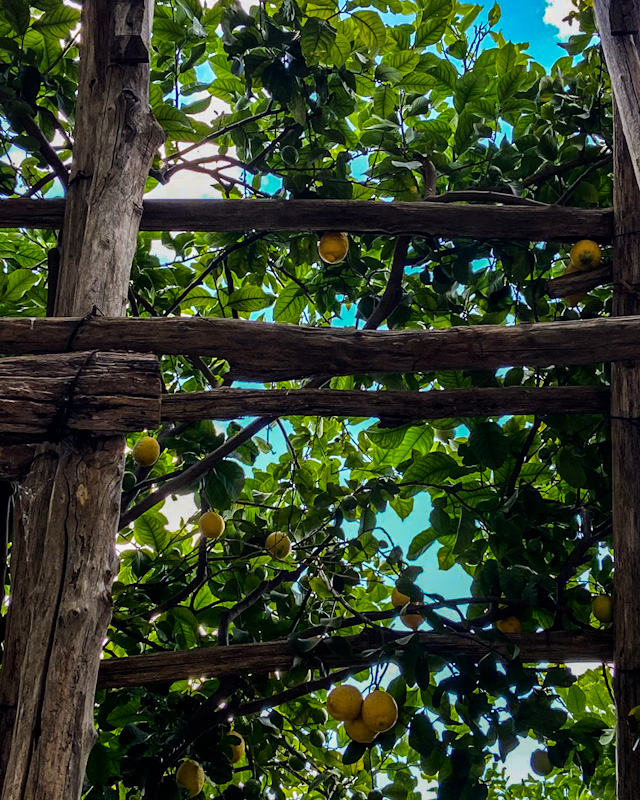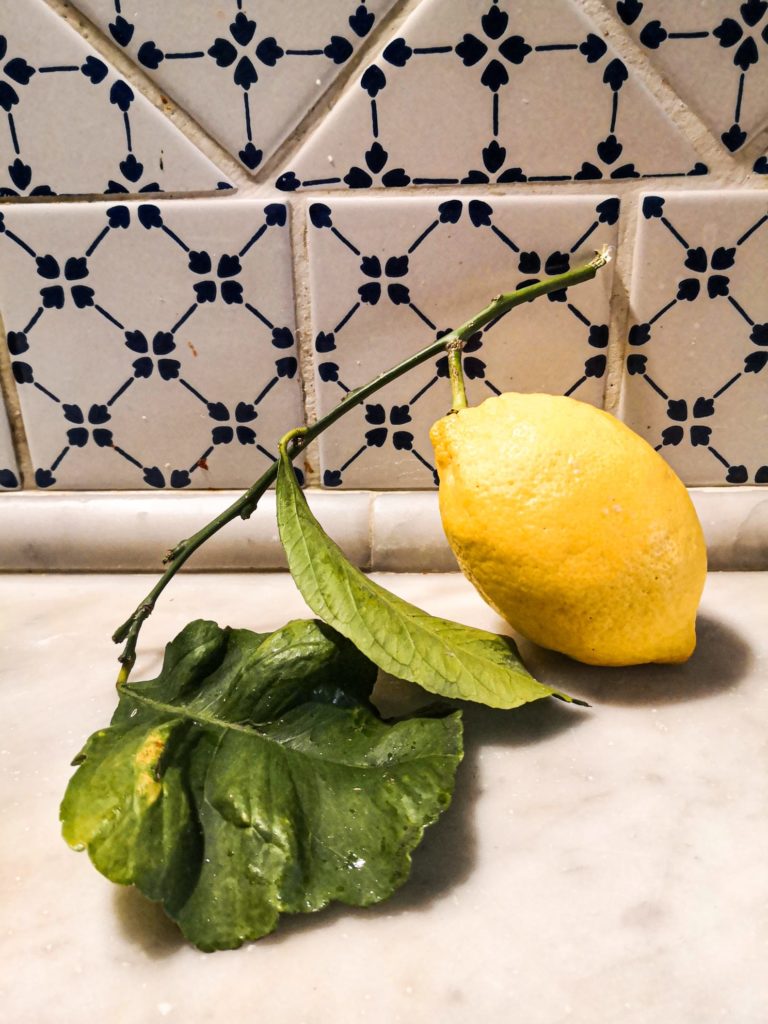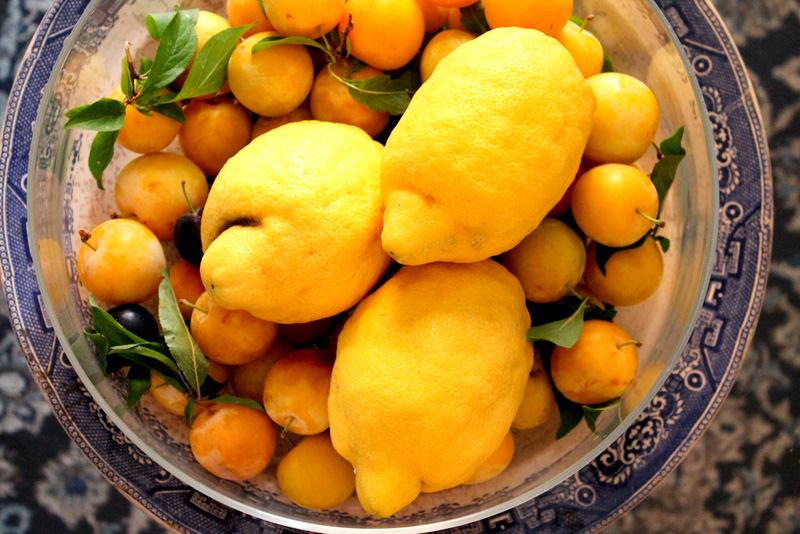Anyone who visits the Amalfi Coast will surely encounter a lemon tree along the way. The name of this very particular variety is “Limone Costa d’Amalfi” (Amalfi Coast Lemon), the name with which it was recognized as PGI (Protected Geographical Indication). Most commonly, it is called “Sfusato Amalfitano” and its characteristics make it unique in the world. I’ll tell you about it in this article.
- The lemon groves: the frame of the Amalfi Coast
- The Amalfi Coast Lemon: a bit of history
- The Sfusato Amalfitano and its characteristics
- The uses of the Sfusato Amalfitano in the kitchen
- Some legends about the Amalfi Coast lemon
The lemon groves: the frame of the Amalfi Coast
Along the Strada Statale Amalfitana 163, which connects all the villages of the Amalfi Coast, it is possible to notice the particular conformation of the mountainside: an expanse of groves created specifically by man for the cultivation of lemons.
The typical terraced cultivation, with its straw covers or through shading nets, not only makes the profile of the Amalfi Coast unique in the world but contributes to making this variety of lemon truly valuable. The conformation of the territory, in fact, protects lemon trees from the north winds, while leaving them exposed to fresh currents from the sea and the sun. This is precisely what makes this variety of lemons among the richest in all of vitamin C.

The Amalfi Coast Lemon: a bit of history
The cultivation of lemons as we can see it today on the Amalfi Coast began around the X – XII century between Cetara and Amalfi. Probably, the ancient Romans already knew lemons. In fact, lemon trees are depicted in some frescoes found in Pompeii, where, however, it is understood that the Romans used this plant as an ornamental plant.
The cultivation of lemons was mainly widespread in Persia, Iraq and Egypt. In fact, the name “lemon” comes from the term “limu” with which the Persians indicated citrus fruits. It is assumed, in fact, that it was the Arabs, or Saracens, in their repeated raids from the sea, that imported the cultivation of lemons on the Amalfi Coast. The lemon, in fact, rich in vitamin C, was very useful on long sea trips to prevent scurvy.
The Sfusato Amalfitano and its characteristics
The Amalfi Coast Lemon is also called Sfusato Amalfitano for its shape and for the area in which it has become unique in its kind: the Amalfi Coast.
Unlike the other varieties of lemons, the Sfusato has a medium thickness peel, of a light yellow color. Its scent and aroma are particularly intense, this also due to the high presence of terpenes. This characteristic is essential for the production of the lemon liqueur, which on the Amalfi Coast is well known with the name of Limoncello. The pulp of this fruit is very juicy and of moderate acidity. The dimensions are medium-large and in the pulp you can count from 8 to 9 segments.

The uses of the Sfusato Amalfitano in the kitchen
Once the Sfusato Amalfitano is harvested, nothing of it is thrown away. Everything is used and used in the kitchen, or for the production of typical products.
The juice is used in the kitchen as a dressing for salads or fish dishes, as well as for the production of Sorbetto: a very fresh granita made with water, sugar and lemon juice. The peel is used for the production of Limoncello, in fact, a large part of the harvest is mainly destined for this use. Lemon can also be eaten naturally, in a fresh salad with lemon slices, vinegar and mint, or just cut with some sugar.
Finally, the use of lemon is present in the confectionery industry: the lemon cream used in the famous “Delizia al Limone” and the water used especially to soak the Babà, which in these areas has acquired its fame precisely for this feature.
I talk about the Babà in this specific article: “The Babbà with two b”

Some legends about the Amalfi Coast lemon
The Amalfi lemon is also present in the tales of Greek mythology. It is said that the famous “Tree with golden apples” which was located in the garden of the Hesperides, was nothing more than a lemon tree. This tree, jealously guarded by the three Hesperides, had been donated by Gea (mother Earth) to Hera, the wife of Zeus, on their wedding day.
During one of his exploits (the twelve labors), Hercules managed to steal these fruits and bring them to men.In addition, it was he who gave the name to the city of Amalfi and planted lemons here.In fact, Hercules was deeply in love with the nymph Amalfi. Due to the sudden death of the nymph, with a heart in pieces, Hercules wanted to bury her in a place that was worthy of hosting her beauty.
Hercules, therefore, set out in search of the perfect place and identified it on the Amalfi Coast, in particular in the village which today takes its name from its beloved, Amalfi. It was Hercules, therefore, who adorned this place with the lemon trees that he had stolen in the garden of the Hesperides and gave the name of the city of Amalfi in honor of his beloved.

